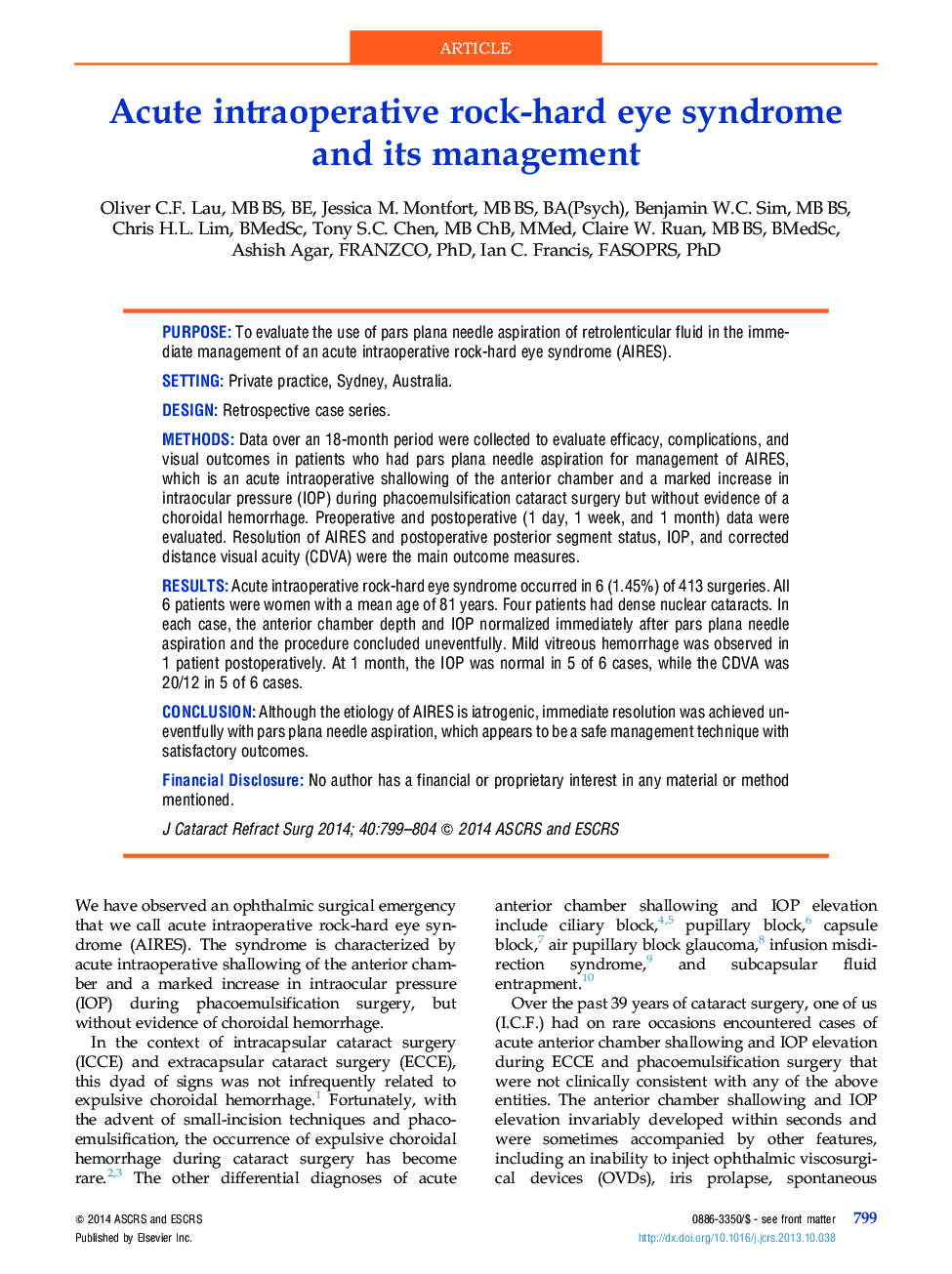| Article ID | Journal | Published Year | Pages | File Type |
|---|---|---|---|---|
| 4017120 | Journal of Cataract & Refractive Surgery | 2014 | 6 Pages |
PurposeTo evaluate the use of pars plana needle aspiration of retrolenticular fluid in the immediate management of an acute intraoperative rock-hard eye syndrome (AIRES).SettingPrivate practice, Sydney, Australia.DesignRetrospective case series.MethodsData over an 18-month period were collected to evaluate efficacy, complications, and visual outcomes in patients who had pars plana needle aspiration for management of AIRES, which is an acute intraoperative shallowing of the anterior chamber and a marked increase in intraocular pressure (IOP) during phacoemulsification cataract surgery but without evidence of a choroidal hemorrhage. Preoperative and postoperative (1 day, 1 week, and 1 month) data were evaluated. Resolution of AIRES and postoperative posterior segment status, IOP, and corrected distance visual acuity (CDVA) were the main outcome measures.ResultsAcute intraoperative rock-hard eye syndrome occurred in 6 (1.45%) of 413 surgeries. All 6 patients were women with a mean age of 81 years. Four patients had dense nuclear cataracts. In each case, the anterior chamber depth and IOP normalized immediately after pars plana needle aspiration and the procedure concluded uneventfully. Mild vitreous hemorrhage was observed in 1 patient postoperatively. At 1 month, the IOP was normal in 5 of 6 cases, while the CDVA was 20/12 in 5 of 6 cases.ConclusionAlthough the etiology of AIRES is iatrogenic, immediate resolution was achieved uneventfully with pars plana needle aspiration, which appears to be a safe management technique with satisfactory outcomes.Financial DisclosureNo author has a financial or proprietary interest in any material or method mentioned.
